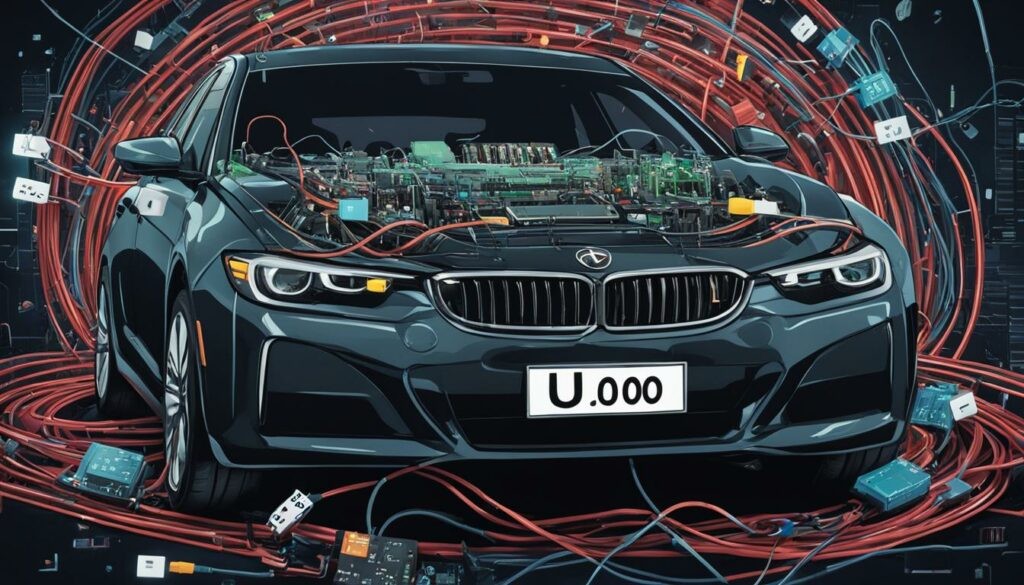The U0100 diagnostic trouble code (DTC), often described as “Lost Communication with ECM/PCM A,” indicates a critical failure in your vehicle’s communication network. This article provides a comprehensive guide to understanding this error code, its potential causes, common symptoms, diagnostic procedures, and possible solutions.
The ECM (Engine Control Module) or PCM (Powertrain Control Module) is your vehicle’s brain, responsible for managing engine performance, fuel efficiency, and emissions. When communication with this vital component is lost, it can lead to significant drivability problems.
Understanding the U0100 Code
The U0100 code signifies that a module in your vehicle cannot communicate with the ECM/PCM. This disruption can stem from various issues within the communication network, affecting the flow of vital data needed for optimal vehicle operation. This communication breakdown can lead to a range of performance issues and even prevent the engine from starting.
Common Causes of U0100
Several factors can contribute to a U0100 lost communication error. These include:
1. Faulty ECM/PCM
A malfunctioning ECM/PCM can be the root cause, preventing it from transmitting or receiving data. This could be due to internal component failure or damage from external factors like heat or moisture.
2. Wiring Issues
Damaged or corroded wiring within the communication network can interrupt the signal flow between modules. This includes wiring harnesses, connectors, and ground connections.
3. Blown Fuses
A blown fuse responsible for powering the communication circuit can lead to a complete loss of communication. Always check the relevant fuses in your vehicle’s fuse box.
4. Low Battery Voltage
Insufficient battery voltage can disrupt the operation of the ECM/PCM and other modules, leading to communication errors. A failing battery or alternator can contribute to this issue.
5. Faulty CAN Bus
The CAN (Controller Area Network) bus is the primary communication network in modern vehicles. Damage to the CAN bus wiring or a faulty CAN bus module can prevent communication.
Symptoms of a U0100 Code
While the illuminated Check Engine Light is the most common indicator of a U0100 code, other symptoms might include:
- No Start Condition: The engine may crank but fail to start.
- Rough Engine Running: The engine might run rough or misfire due to lack of proper control signals.
- Reduced Fuel Efficiency: The vehicle might experience decreased fuel economy.
- Transmission Issues: Shifting problems or erratic transmission behavior might occur.
- Other Warning Lights: Other warning lights related to the affected system might illuminate.
Diagnosing the U0100 Code
Diagnosing a U0100 code requires a systematic approach:
- Retrieve Diagnostic Trouble Codes: Use an OBD-II scanner to retrieve all stored trouble codes.
- Visual Inspection: Inspect wiring harnesses, connectors, and fuses for damage, corrosion, or loose connections.
- Battery and Alternator Test: Verify that the battery and alternator are functioning correctly and providing adequate voltage.
- CAN Bus System Test: Use a specialized diagnostic tool to test the integrity of the CAN bus network.
- Module Communication Test: Use a scan tool to check communication between the ECM/PCM and other modules.
Fixing the U0100 Code
Repairing a U0100 issue depends on the underlying cause:
- Replace Faulty Components: Replace any damaged wiring, connectors, fuses, or modules.
- Repair Wiring Issues: Repair or replace any damaged or corroded wiring.
- Address Battery/Alternator Problems: Replace a failing battery or alternator.
- ECM/PCM Reprogramming or Replacement: In some cases, the ECM/PCM might require reprogramming or replacement.
Conclusion
The U0100 code represents a serious communication problem that can significantly impact your vehicle’s performance. Addressing this issue promptly is crucial. While some fixes can be performed by experienced DIYers, complex issues often require the expertise and specialized equipment of a qualified automotive technician. Ignoring this code can lead to further damage and more costly repairs. Consult your vehicle’s repair manual or seek professional help for accurate diagnosis and repair.

